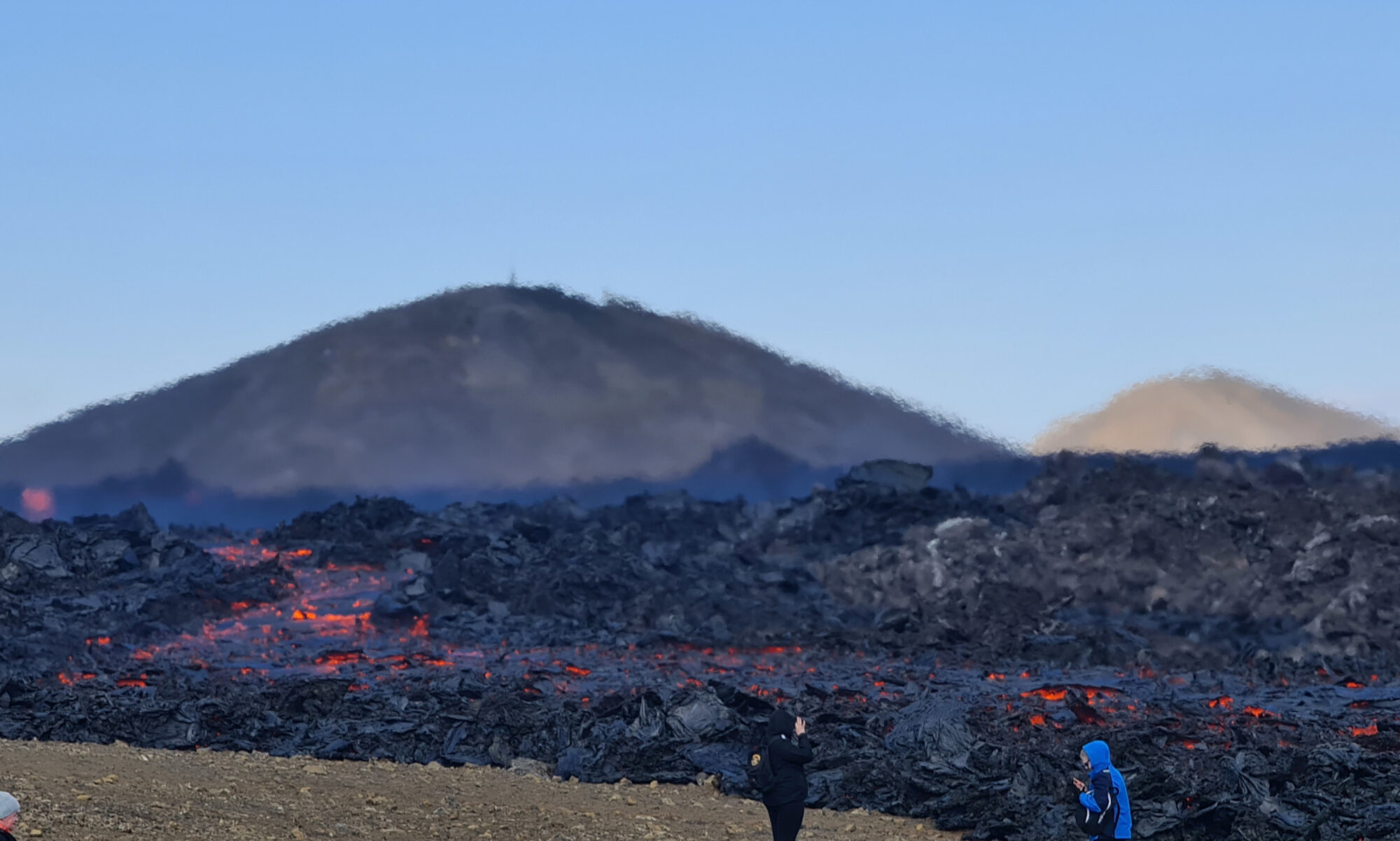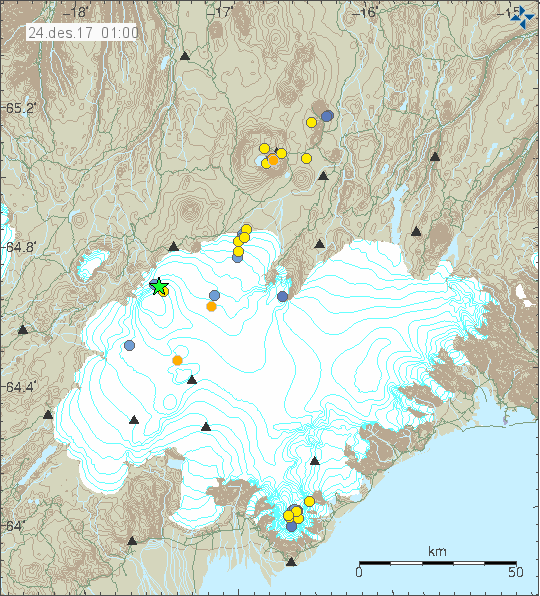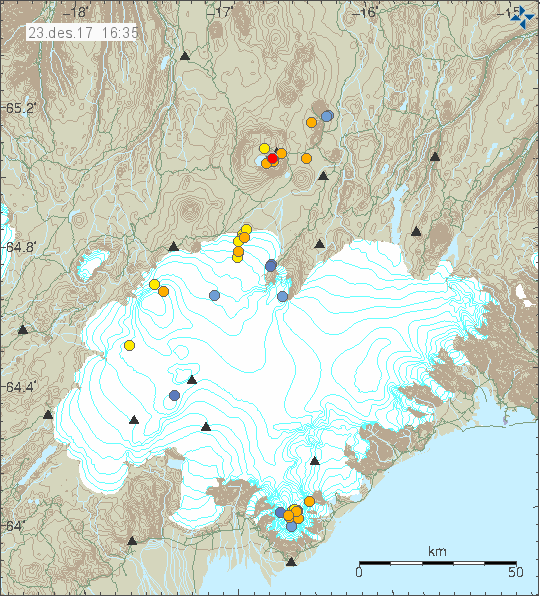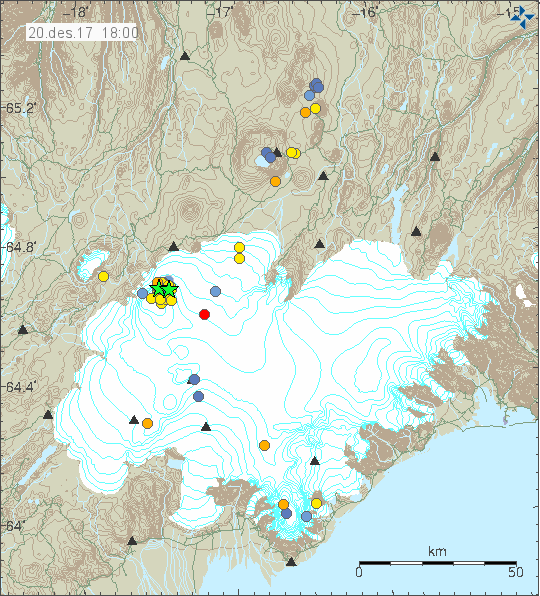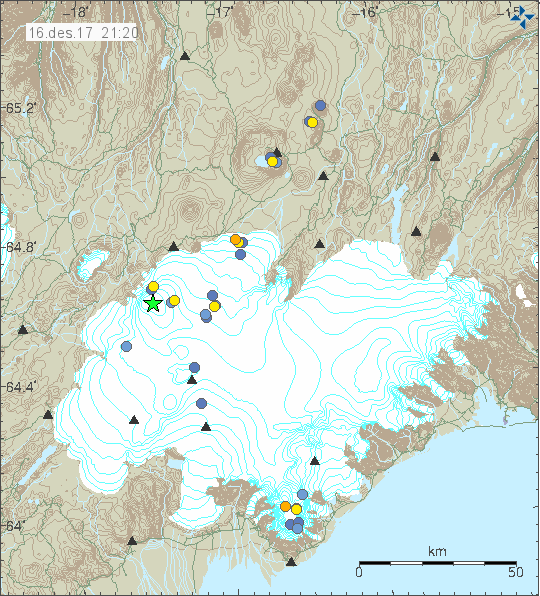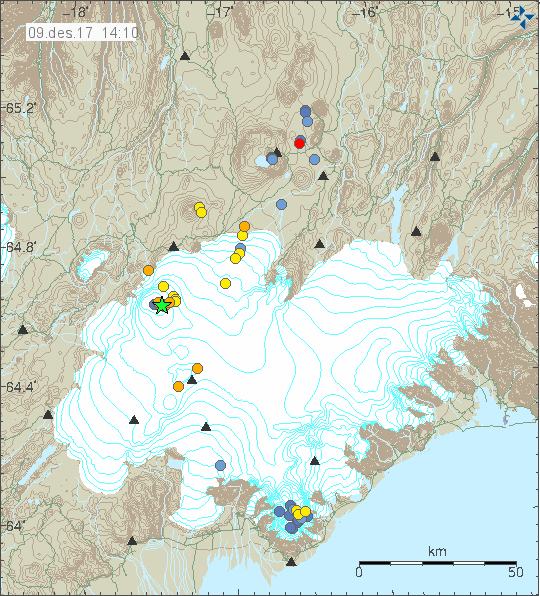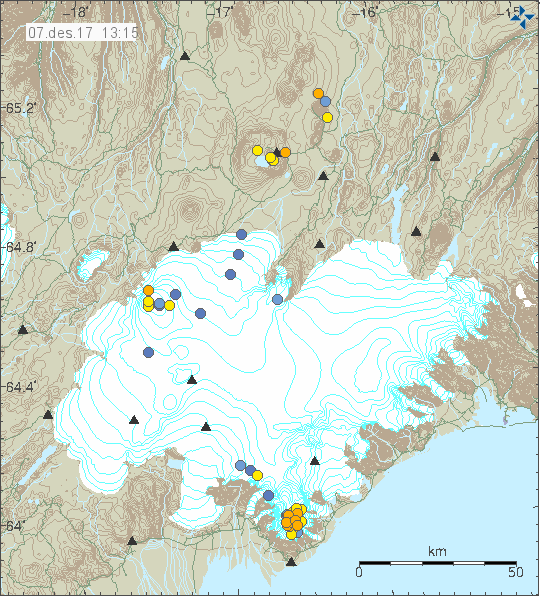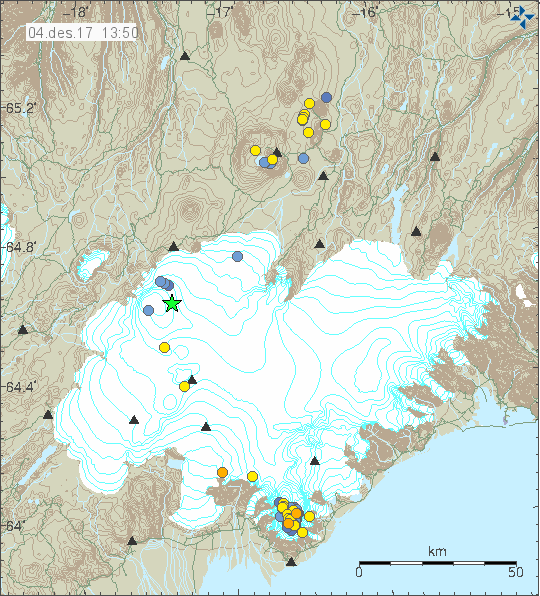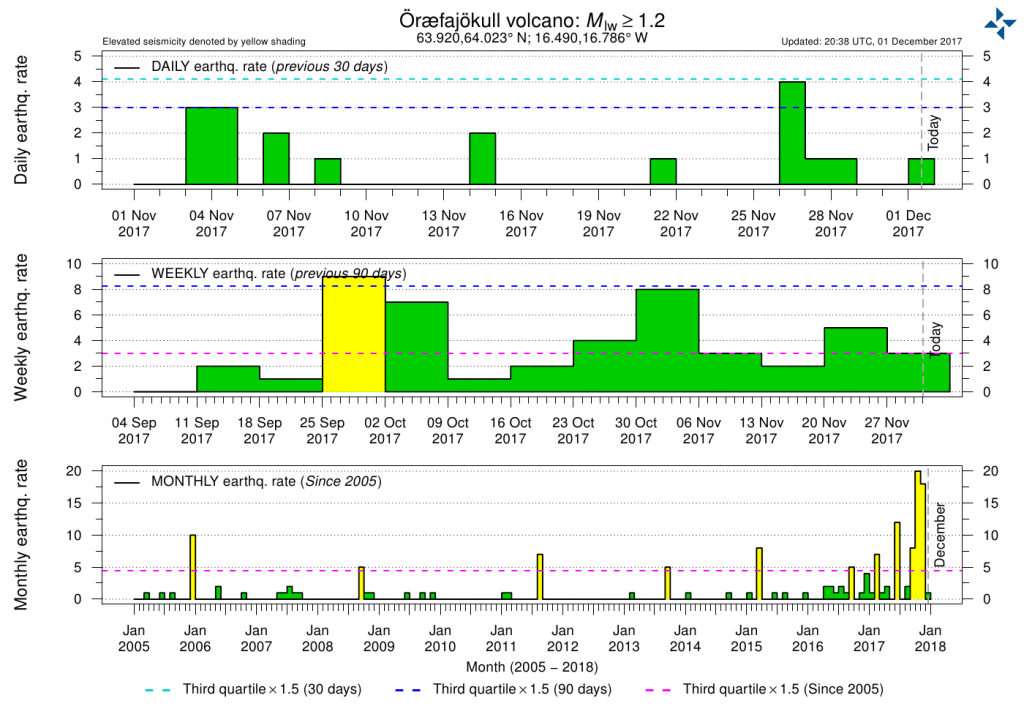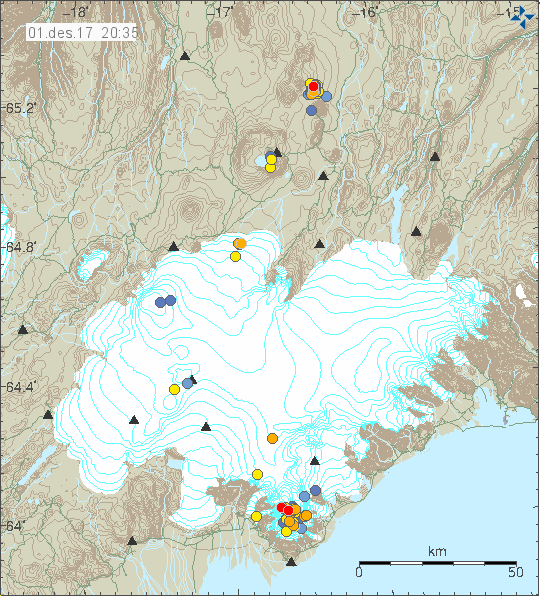Earthquake activity continues in Öræfajökull volcano as has been doing for past several months. Earthquake activity goes up and down a little, some days there are fewer earthquakes while in others there is more activity.
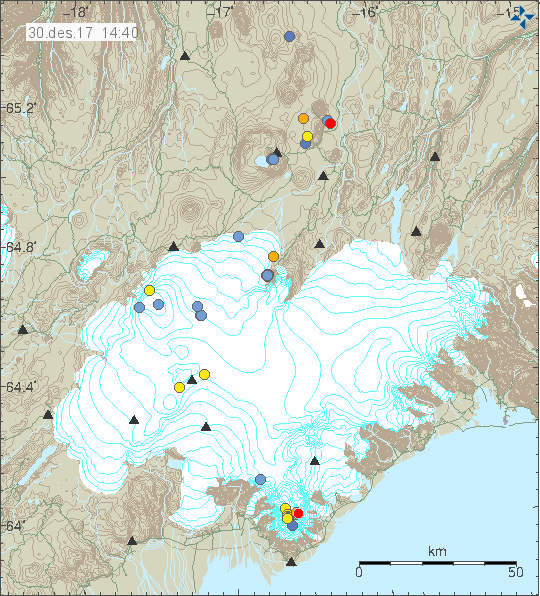
Latest earthquake activity in Öræfajökull volcano. Copyright of this image belongs to Icelandic Met Office.
Current earthquake activity is consistent with volcano of this type (stratovolcano with rhyolitic type of magma). Earthquake activity happens when the magma or gas connected to it moves inside the volcano. That movement changes during the day and is never constant and impossible to predict.
Donations
Please remember to support my work with donations. Thanks for the support. 🙂
